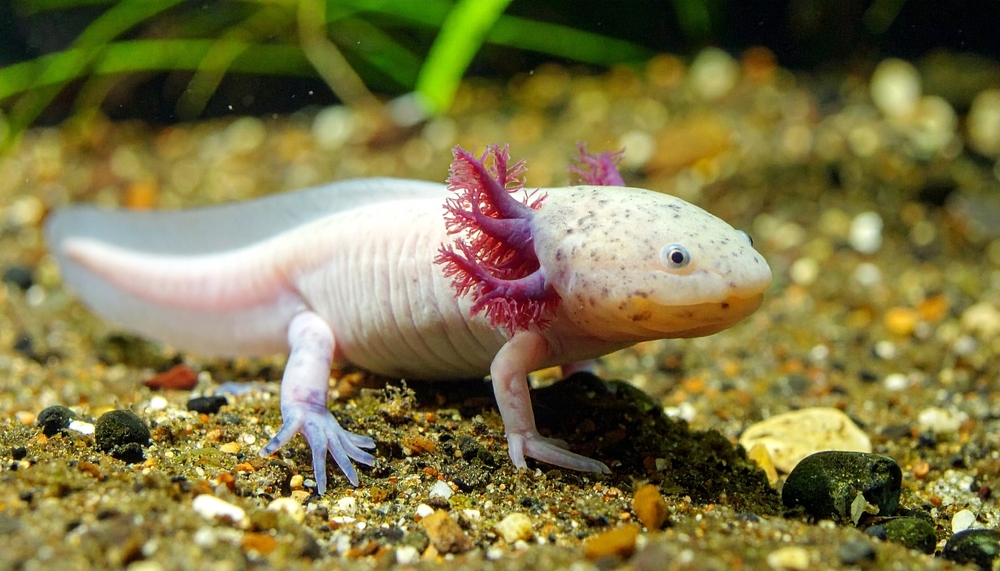Uniqueness
Neoteny – Permanent Larval State:
The axolotl (Ambystoma mexicanum) is famous for its neoteny, a rare condition where it retains juvenile features into adulthood, such as external gills, tail fins, and an aquatic lifestyle. Unlike most amphibians, it never undergoes full metamorphosis unless hormonally induced. This trait is central to its uniqueness and has made it a major subject in evolutionary and developmental biology.
Regenerative Superpowers:
Axolotls possess some of the most advanced regenerative abilities of any vertebrate. They can fully regrow limbs, spinal cords, tail fins, parts of the heart, and even sections of the brain and eyes—without scarring. This makes them a critical model organism in regenerative medicine and tissue engineering research.
Albino Color Morph:
The albino axolotl is a captive-bred variant with pale pink or white skin, red external gills, and red or gold eyes. It lacks melanin, making it especially vulnerable to bright light but visually striking. Albino morphs do not occur naturally in the wild, but are widely bred for scientific and hobbyist communities.
Critically Endangered in the Wild:
Though common in captivity, wild axolotls are critically endangered, with fewer than 1,000 estimated individuals remaining in their natural habitat in Lake Xochimilco. Habitat destruction, invasive species, and pollution have nearly eradicated them from the wild.
Suction Feeding and Non-Metamorphosis:
Axolotls are suction feeders with underdeveloped teeth, relying on a vacuum-like action to consume prey. Their lack of metamorphosis is linked to thyroid hormone resistance, setting them apart from nearly all other amphibians, which transition to terrestrial adults.
Model Species in Science:
Due to their large embryos, transparent development stages, and regenerative traits, axolotls are a key model in labs studying:
-
Organ regeneration
-
Cancer resistance
-
Neuroplasticity
-
Genetics of development
Summary:
The albino axolotl is a one-of-a-kind amphibian: a permanently aquatic, pale-skinned creature with external gills, regenerative powers, and a life frozen in larval form. Its combination of biological rarity, scientific value, and ethereal beauty make it one of the most unique vertebrates on Earth—and a global ambassador for amphibian conservation and regenerative research.



































































